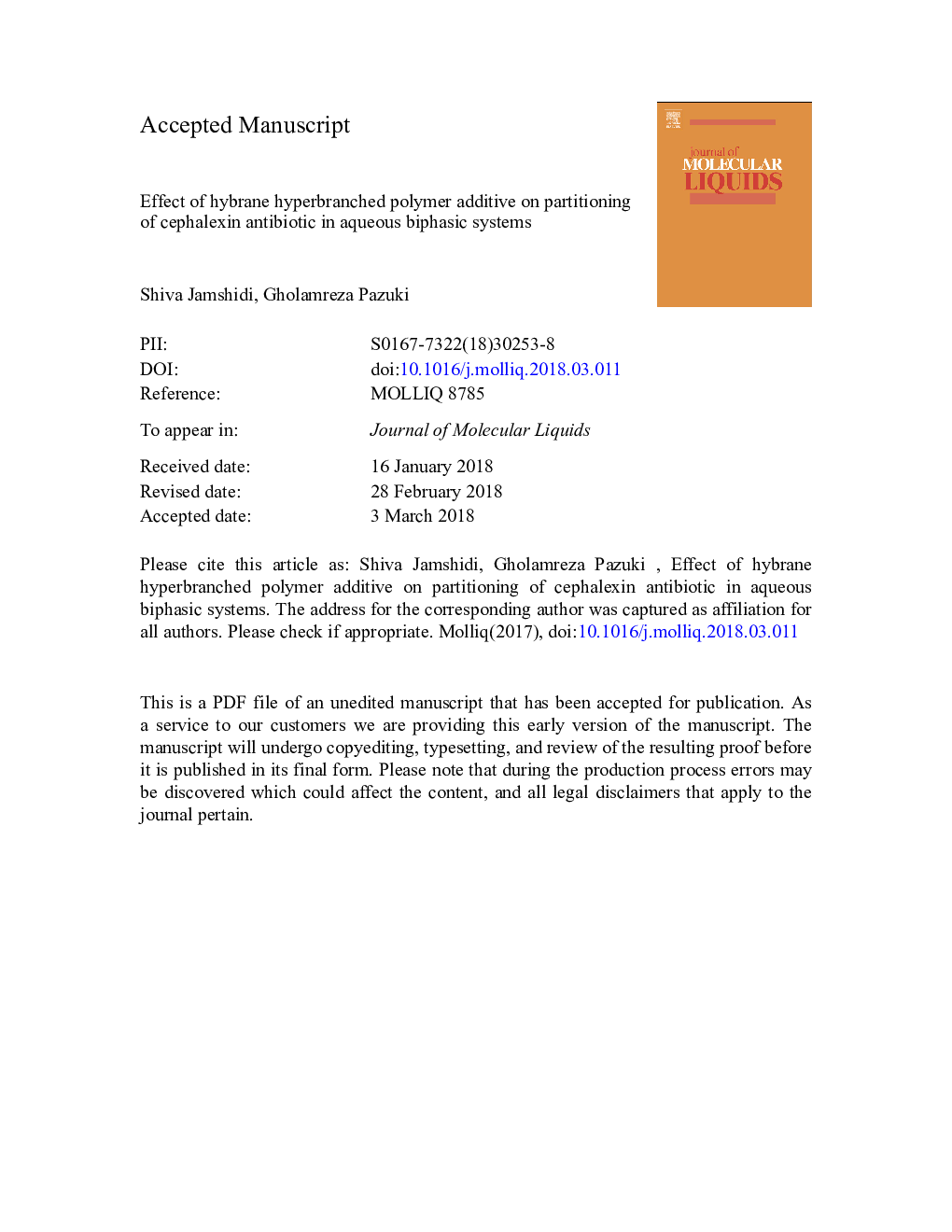| Article ID | Journal | Published Year | Pages | File Type |
|---|---|---|---|---|
| 7842461 | Journal of Molecular Liquids | 2018 | 18 Pages |
Abstract
In this research, the partitioning of cephalexin as a broad-spectrum antibiotic has been investigated in an aqueous two-phase system (ATPS) comprised of poly(ethylene glycol) (PEG), trisodium citrate (Na3Cit), as well as a special hyperbranched polymer (i.e. Hybrane®) which has the potential to help the purification process be more efficacious. Adding 4Â wt% Hybrane® (HB) into the system elevated the maximum antibiotic partition coefficients from 2.40 to 3.07 and from 2.1 to 2.85 for the ATPSs containing PEG 600 and PEG 2000, respectively. The phase diagram results suggested that using PEG 2000 in the ATPS enlarged biphasic area compared to using PEG 600. Also, the introduction of HB into the ATPS decreased the salt concentration in the top phase, and fostered its tendency towards the bottom phase. In general, the values of partition coefficient for the ATPSs containing PEG 600 are higher than those for the (PEG 2000)-based ATPSs. Furthermore, increasing the polymer and salt concentrations had an adverse effect on the partition coefficient. The partitioning behavior of cephalexin demonstrates that our ATPS, featuring HB, can serve as a favorable, benign milieu for the separation and release of this antibiotic.
Related Topics
Physical Sciences and Engineering
Chemistry
Physical and Theoretical Chemistry
Authors
Shiva Jamshidi, Gholamreza Pazuki,
